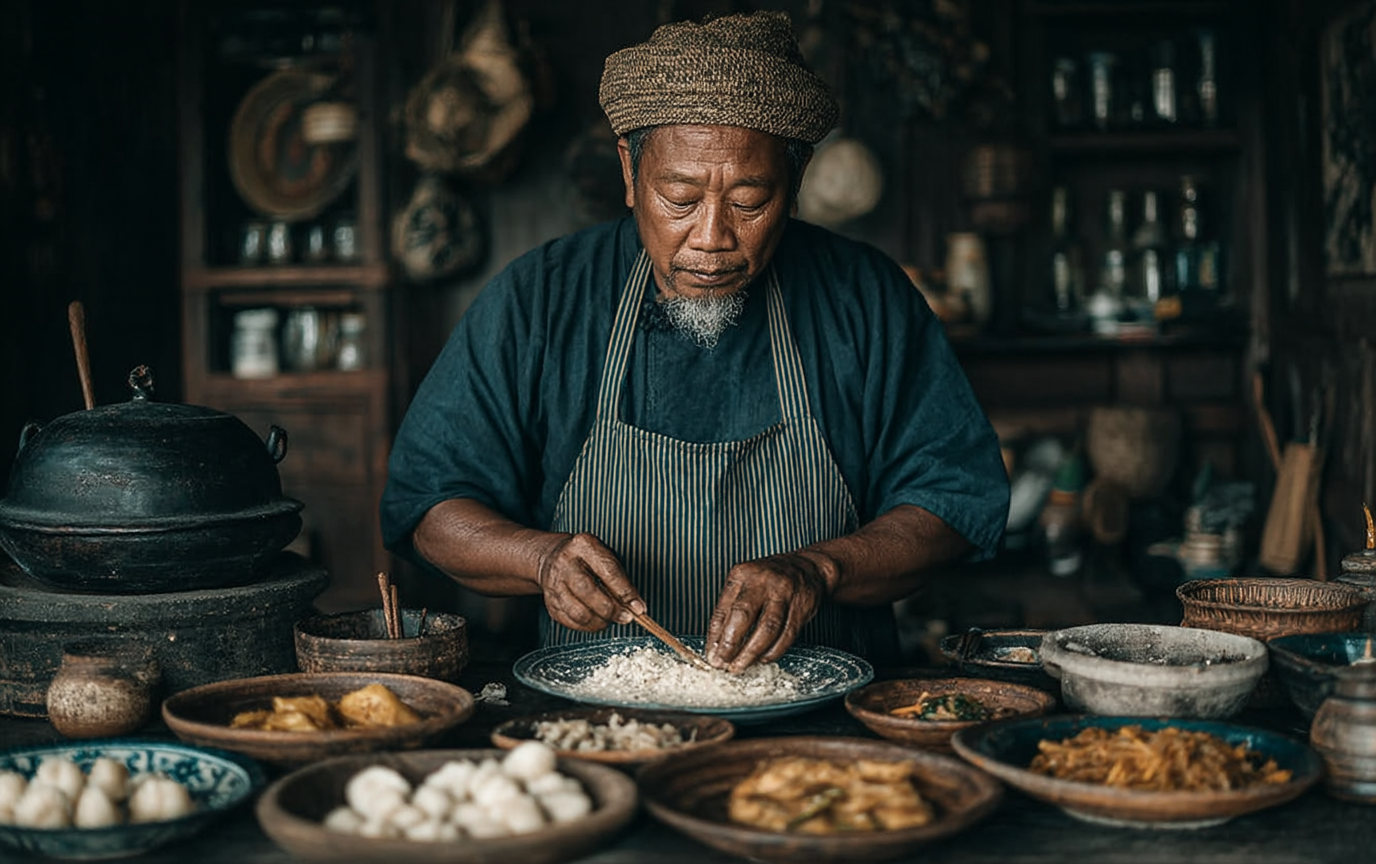How to Eat Like a Local on Your Next Trip: A Savvy Traveler’s Guide
Eating like a local isn’t just about stuffing your face with unfamiliar dishes—it’s about diving into the very heart of culture through its flavors. Imagine slurping phở in the bustling alleyways of Hanoi, feeling the warmth of a freshly baked baguette in Paris, or savoring bold tapas in the hidden bodegas of Barcelona. These experiences transform your meal into a vivid journey. Let’s explore how to ditch the tourist traps and dine where the locals do. Each tip is your passport to a richer, more authentic travel experience.
Pre-Trip Research: Beyond Tourist Brochures
Before you embark on your gastronomic adventure, arm yourself with knowledge that goes beyond the glossy pages of tourist brochures. Researching regional specialties is crucial—Italy’s pizza is divine, but have you tasted Tuscan pici pasta with wild boar ragu? Or the famed Florentine steak known as bistecca alla Fiorentina? Use resources like local food blogs, documentaries like Salt, Fat, Acid, Heat, and even regional cookbooks to identify must-try dishes.
Consider diving into social media platforms too. You can discover hidden gems by using hashtags related to your destination, or even tools like Google Trends to see what’s making waves in your chosen locale. When I planned my trip to Thailand, I stumbled upon a small food blog loaded with secret recipes, and it transformed my palate completely.
Ask Locals—Yes, Even the Taxi Driver
This is where you’ll uncover the true gems. Don’t hesitate to ask locals for recommendations. Your hotel concierge or even your Uber driver often has insider knowledge on authentic spots. I remember asking a taxi driver in New York for his favorite pizza joint, which led me to the best slice I’ve ever had at a tiny, family-run pizzeria in Brooklyn, brimming with character.
Practical tip: Learn a few phrases in the local language, like “What’s your favorite dish here?” It’s a small gesture that builds trust and often leads to better dining experiences.
Market Hopping: Where Locals Stock Their Kitchens
Start your culinary journey at a local market. La Boqueria in Barcelona and Marrakech’s Jemaa el-Fnaa are more than just tourist spots; they are the heartbeat of the culinary community. These markets are where chefs source their ingredients, showcasing seasonal produce and artisanal foods.
Snack on fresh fruits or indulge in a never-before-tasted cheese as you wander through stalls. The longer the line at a stall, the more likely it is to serve something exceptional. There was a moment in Marrakech where I tasted the sweetest figs during peak season—each bite bursting with the essence of sunshine.
Eat With the Calendar
Timing is everything when it comes to experiencing local flavors. Festivals are a great way to taste dishes often reserved for special occasions. For instance, Vietnam’s Tết festival offers bánh chưng, a sticky rice cake traditionally served for the New Year, while Morocco’s Eid al-Fitr feast features bisteeya, a spiced pigeon pie that is simply sensational.
Plan your trip around these events. Trust me, the experience of engaging with food tied to tradition is priceless. During my travels to India, partaking in Diwali festivities, I discovered sweets I never knew existed—rose-flavored gulab jamun that melted away my worries.
Neighborhood Deep Dives
Tourist hotspots might dazzle with their glamour but rarely do they offer the best food. Venture into the neighborhoods where the locals live and eat. In Tokyo, for example, trading the busy Shibuya area for Kagurazaka’s izakayas opens up a world of flavors that most tourists overlook.
Consult alt-weekly newspapers (like LA Weekly or Time Out), or simply let your feet lead you to café-lined streets. I had the fortune of wandering into a quaint little eatery in Lisbon, where I had the most decadent bacalhau à brás. The joy of dining among the local crowd is incomparable!
Food Tours: Your Culinary Crash Course
Consider joining a food tour, which can be one of the most enlightening experiences. A well-curated tour will introduce you to local dishes and unravel the etiquette and stories behind each meal. Opt for something intimate, like a small-group street food crawl in Hanoi, where the flavors and stories are as rich as the culture itself.
I’ll never forget the food tour I took in Bangkok, where our guide, a local chef, took us through the bustling stalls and shared the history of each dish. Each bite was an insight into the city’s soul.
Embrace the Unfamiliar
When the locals stare as you order a dish that looks like a horror story on a plate, remember: these dishes carry richness and legacy. In Cambodia, I bravely tried prahok, a fermented fish paste that many locals relish. Each tasting is a step closer to understanding a culture that may be vastly different from your own.
This journey into the unknown is invigorating. Yes, chicken’s foot in Ho Chi Minh City might make you raise an eyebrow, but believe me when I say that stepping out of your comfort zone can lead to spiritual and gustatory enlightenment.
Learn to Cook Like a Local
Taking a cooking class can be a fantastic way to truly connect with local cuisine. Whether it’s learning to make fresh pasta with an Italian nonna or mastering the art of Thai curry with a street vendor, these experiences often lead to discovering ingredient markets off the beaten path.
In Bali, I enrolled in a cooking class that started with a trip to a local market. I learned how to pick the best lemongrass and turmeric, and the resulting dishes tasted like home—reminding me of the delicious meals I had every evening.
Dine at Off-Hours
Dining at the right times is essential. Spaniards eat lunch around 2 p.m. and have dinner as late as 9 p.m. If you’re in Spain at noon, don’t expect locals to be sitting down for meals just yet. Sync your dining schedule with local customs and be rewarded with bustling atmospheres rather than empty restaurants.
The first time I stepped into a tapas bar in Seville just after 10 p.m., the energy in the room was electric. The buzz of laughter mixed with clinking glasses filled me until I dined on a myriad of delectable bites while making new friends.
Leverage Tech Wisely
Technology can be your friend when searching for authentic meals. Instead of defaulting to restaurant review sites like Yelp, try Google Maps to find eateries that locals frequent. Apps such as EatWith let you dine at a local’s home for a home-cooked experience while connecting with travelers like yourself.
While in Athens, I used Instagram geotags to stumble upon a culinary pop-up that served the best gyros I’ve ever tasted. It’s these unexpected finds that make your journey memorable.
Follow the Workers
If you want to eat like a local, don’t just be a bystander; become a participant. During lunch hours, follow office crowds to their favorite spots—these places tend to be less pretentious and, often, more affordable.
In Lisbon, I wandered into a tasca, a small tavern bustling with locals where I grabbed grilled sardines and vinho verde for only eight euros. The atmosphere radiated warmth, and I felt like I was part of the community for that brief moment.
Mind the Language
Navigating a foreign menu can be daunting, but a little language knowledge goes a long way towards enriching your dining experience. Learn key local terms like menú del día (day menu) in Spain or degustazione (tasting menu) in Italy. It makes a remarkable difference in how locals perceive you.
Moreover, knowing dining etiquette can prevent embarrassing faux pas. In Japan, for example, never stick your chopsticks upright in rice; it mimics a funeral rite. Small gestures matter, and they can open doors to hospitality you might not otherwise experience.
Hit the Grocery Store
Don’t forget the grocery store! Local shops often have unexpected delights. From Japan’s 7-Elevens having sushi-grade onigiri to Germany’s Aldi showcasing seasonal treats, grocery stores can offer insight into the region’s food culture that restaurants sometimes miss.
My favorite late-night treasure hunt in a Tokyo convenience store introduced me to green tea KitKat, which quickly became my go-to souvenir for friends back home.
Sit at the Bar
Dining alone? Don’t fret. Pull up a stool at the bar of a tapas restaurant or izakaya, where bartenders are often artisans in their own right. In Madrid, I savored gilda skewers while chatting with locals as they came in for their evening cocktails.
There’s an intimacy to bar dining that fosters connections, stories, and sometimes even friendships with those around you. You leave not just satiated but enriched by the stories shared.
Trust the Queue
If a food stall has a line stretching around the block, join it! In places like Bangkok, locals know the best spots, and a 30-minute wait usually signifies quality. The anticipation builds as you eye the sizzling dishes being prepared.
Trust me, the ramen I devoured after standing in line for an eternity in Tokyo was life-changing. Each slurp was an understanding that this was what food was meant to be—a warm embrace of flavors wrapped in tender noodles.
Final Bite: Stay Curious
Eating like a local isn’t merely a checklist; it’s a mindset. It invites you to swap your comfort zone for a plastic stool at a phở stall in Hanoi or a shared table in the winding streets of Naples. As the late Anthony Bourdain beautifully said, “Your body is not a temple. It’s an amusement park.” Let the locals guide you to the best rides, and remember—every meal is not just sustenance, it is a story awaiting to unfold.
Transform your travels into a celebration of taste and culture. The world is a culinary playground, waiting to be explored. Each dish tells a story as old as the land itself, and it’s yours for the tasting.
Interested in more insightful reads? Check out our Travel Tips section for the latest advice. For lifestyle inspiration, explore our Lifestyle category, and dive into amazing destinations at Destinations. Don’t forget to connect with us on YouTube, or follow our adventures on Instagram and Pinterest.
Happy travels, dear friends. May your plates be full and your cravings satisfied!













